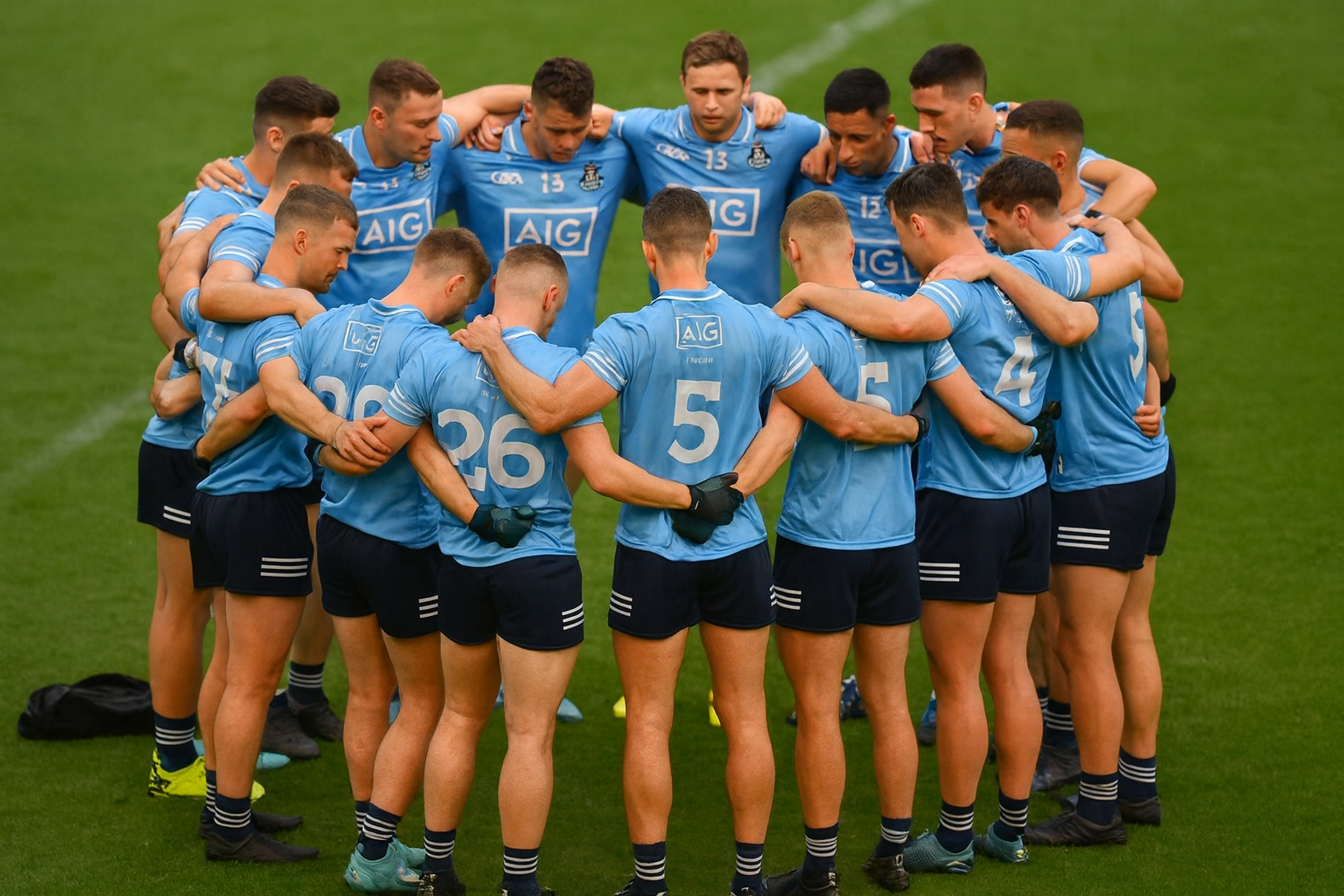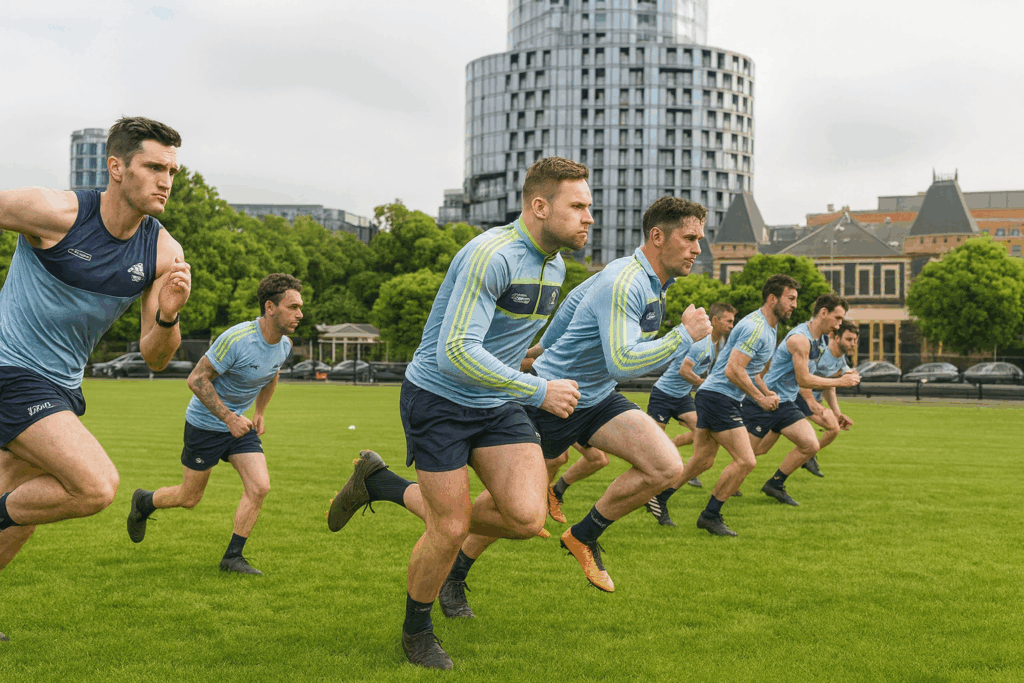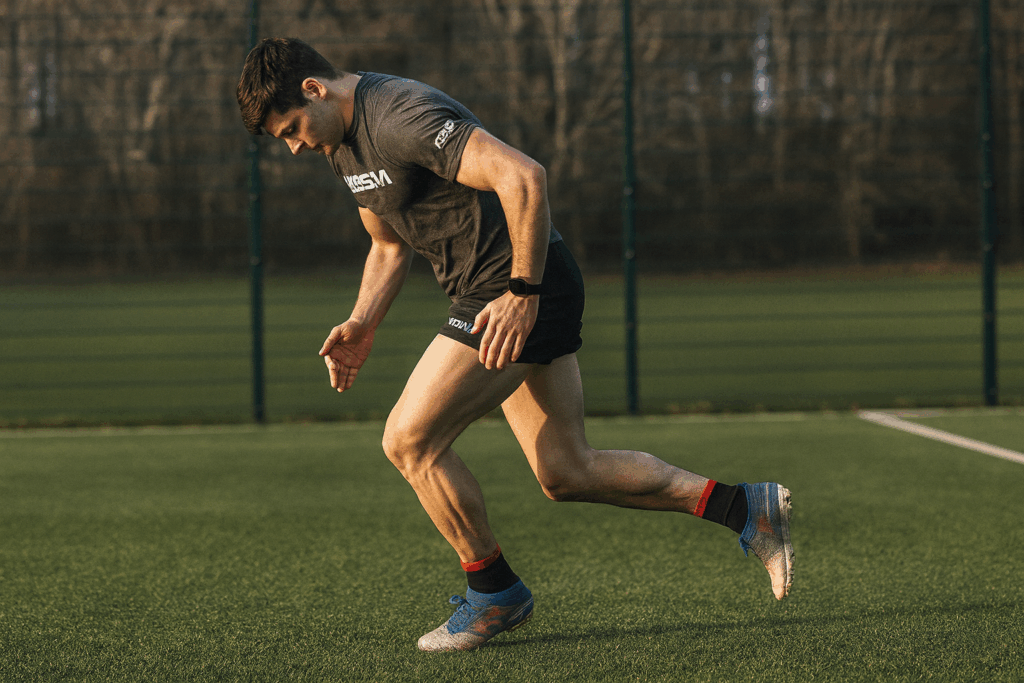Introduction
Success in GAA isn’t just about talent or hard work—it’s about setting meaningful goals that align with your long-term vision and identity as a player. This GAA goal-setting guide introduces a flexible and actionable framework to help you create goals that foster growth, build essential habits, and lead to sustained success.
Understanding the Goal-Setting Hierarchy
Effective goal-setting involves a hierarchy of objectives that ensures every action aligns with your ultimate aspirations. Breaking goals into levels helps create clarity and structure:
1. Superordinate Goals (Top Level): Your Ultimate Vision
These goals represent your “ideal self”—the player you aspire to become. They are broad, aspirational, and provide long-term direction.
- Example:
“I want to be a disciplined, reliable, and impactful GAA player who consistently contributes to my team’s success.”
2. Intermediate Goals (Middle Level): Building Blocks of Success
Intermediate goals define the traits, skills, or milestones needed to achieve your superordinate goal.
- Examples:
- “Develop greater resilience.”
- “Improve sprint speed.”
- “Enhance tactical awareness.”
3. Subordinate Goals (Bottom Level): Actionable Habits
Subordinate goals are the daily or weekly habits that drive progress toward your intermediate goals.
- Examples:
- “Perform sprint drills twice a week.”
- “Meditate for 10 minutes daily to build focus.”
- “Review match footage weekly.”
Why We Don’t Rely on SMART Goals
While SMART goals (Specific, Measurable, Achievable, Relevant, Time-bound) are widely used, they have limitations in athletic development:
- Overemphasis on Outcomes:
SMART goals often focus on measurable results rather than the daily processes that lead to success.- Example: A goal to “Run 2km in under 8 minutes” might overlook the need for consistent training and proper recovery.
- Inflexibility:
Life and sports are unpredictable. SMART goals may not adapt to injuries or unexpected schedule changes. - Lack of Long-Term Vision:
SMART goals prioritize short-term wins, often disconnecting from your ultimate aspirations.
Instead, this guide focuses on creating a dynamic, process-oriented framework that prioritizes long-term growth and aligns with your identity as a player.
Part 1: Define Who You Want to Be
Your superordinate goal reflects your ultimate vision—the ideal version of yourself as a player and person.
Steps to Define Your Superordinate Goal:
- Reflect on Your Identity:
- “What kind of player and person do I want to be?”
- “What values define my best self on and off the pitch?”
- “How do I want to be remembered by teammates and coaches?”
- Visualise Your Future Self:
Picture yourself at your peak performance. What traits, achievements, and behaviours stand out? - Write Your Goal:
Summarise your reflections into a clear, aspirational statement.- Example:
“I want to be a disciplined, reliable, and impactful GAA player who consistently contributes to my team’s success.”
- Example:
Part 2: Identify the Traits You Need to Succeed
Your intermediate goals define the skills and characteristics required to embody your superordinate goal.
Steps to Set Intermediate Goals:
- Break Down Your Vision:
Identify the key attributes needed to achieve your superordinate goal.- Examples:
- Physical: Endurance, speed, strength.
- Mental: Resilience, focus, confidence.
- Skills: Accurate passing, consistent scoring.
- Examples:
- Evaluate Your Gaps:
Assess your current strengths and weaknesses. Which traits do you excel in? Where do you need improvement? - Set Measurable Goals:
For each trait, define an objective with specific, time-bound criteria.- Examples:
- “Improve sprint speed to complete a 20m sprint in under 3 seconds.”
- “Develop greater resilience by staying composed under pressure.”
- “Achieve 70% scoring accuracy in free kicks.”
- Examples:
Part 3: Build Habits That Drive Progress
Your subordinate goals are the daily or weekly habits that build the traits defined in your intermediate goals.
Steps to Create Effective Habits:
- Align Habits with Goals:
Ensure each habit directly supports an intermediate goal. - Start Small:
Begin with manageable actions to build consistency, then gradually increase intensity or frequency. - Plan and Schedule:
Decide when and how you’ll practice each habit. - Examples of Habits:
- To build resilience: Practice mindfulness for 10 minutes daily.
- To improve sprint speed: Perform sprint drills twice a week, focusing on explosive starts.
- To enhance tactical awareness: Review match footage weekly, noting positioning and decisions.
- To increase strength: Schedule two weightlifting sessions per week targeting key muscle groups.
- Track Progress:
Use a journal or app to monitor consistency and celebrate small wins.
Key to Success: Reflection and Adaptation
Goal-setting is an ongoing process. Regular reflection ensures you stay aligned with your aspirations while adapting to challenges.
Reflection Practices:
- Weekly Check-Ins:
- “Am I following through on my habits?”
- “Are these habits helping me build the traits I need?”
- Monthly Reviews:
- Assess progress toward intermediate goals.
- Adjust goals and habits as necessary to remain aligned with your superordinate goal.
- Stay Flexible:
Life and sports are unpredictable. Be prepared to adapt while keeping your long-term vision in mind.
Conclusion
Creating meaningful goals as a GAA player involves more than ticking off achievements—it’s about aligning your actions with the player and person you aspire to become. By using a hierarchical framework of superordinate goals, intermediate goals, and subordinate habits, you can build a clear, actionable roadmap to long-term success.
Remember, progress comes from consistent effort and reflection. Embrace the journey, adapt as needed, and keep your vision in focus. With the right mindset and habits, you can achieve extraordinary results on and off the pitch. Send this GAA goal-setting guide to a teammate or player who you feel would benefit from having more clarity and motivation.





